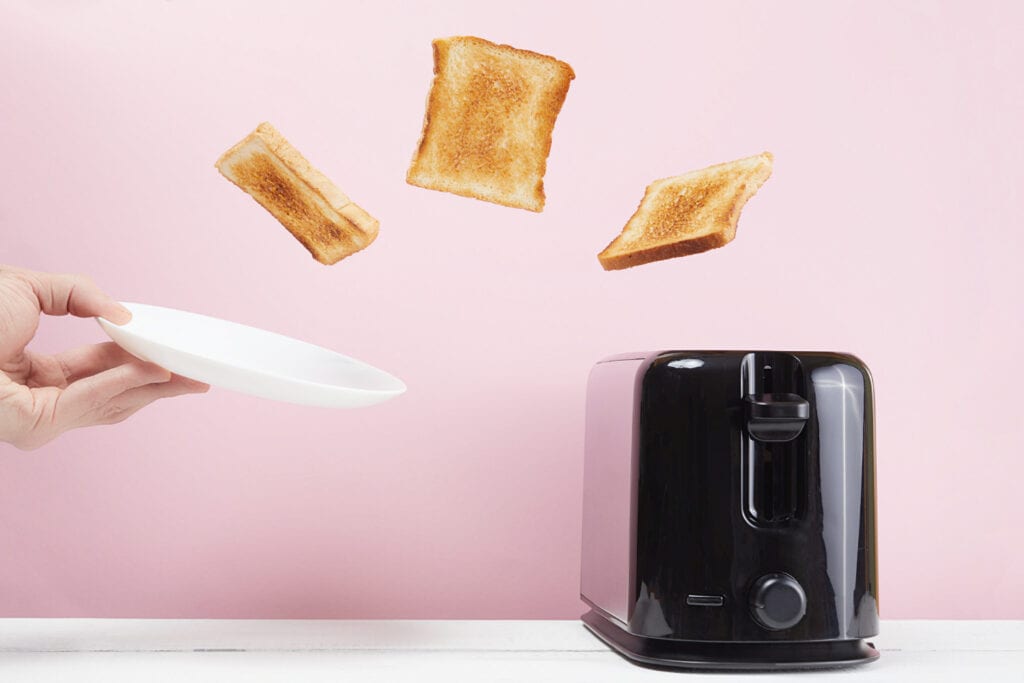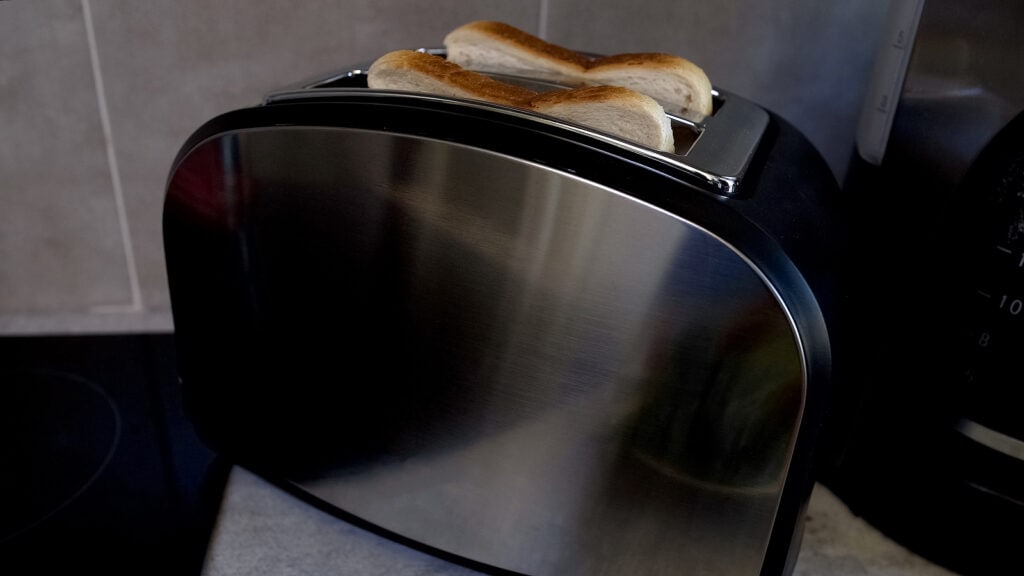Toaster Electricity Use
Toasters are a common appliance in households around the world, providing us with quick and convenient breakfast options. However, have you ever stopped to think about how much electricity your toaster consumes every time you pop in a slice of bread? Understanding the electricity use of your toaster can not only help you save on your energy bills but also contribute to a more sustainable lifestyle. In this comprehensive guide, we'll delve deep into the world of toaster electricity use, exploring its impact on your energy consumption, and providing practical tips to make your toasting habits more energy-efficient.
How Does a Toaster Work?
The toaster, a staple in many kitchens worldwide, is a marvel of simplicity in its function yet intricate in its design. Here's a more detailed breakdown of its workings:
- Main Components of a Toaster: Broadly speaking, the primary parts of a toaster include the outer shell (typically made of plastic or metal to house the internal components), heating elements, a timer mechanism, a lever to lower and raise the toast, and a crumb tray for easy cleaning.
- Heating Elements: At the heart of the toasting process are the heating elements, which are typically made from nichrome wire. Nichrome, an alloy of nickel and chromium, is favored for its unique property of offering high electrical resistance. When electricity passes through the nichrome wires, this resistance causes the wire to heat up rapidly, emitting infrared radiation. It is this radiation that toasts, or browns, the surface of the bread, giving it a crunchy texture and a flavorful aroma.
- Timer and Browning Control: Accompanying the heating elements is the timer mechanism, which serves two primary purposes. Firstly, it allows the user to set their preferred toasting duration, dictating the degree of browning on the toast – from lightly toasted to charred. Once the timer reaches its set duration, it activates a mechanism that releases the lever, thus raising the toasted bread. Simultaneously, it disengages the circuit, turning off the heating elements.
- Safety Features: Modern toasters often come with additional safety features. For example, if a piece of bread gets jammed and doesn’t pop up, many toasters have a built-in mechanism that cuts off the electricity after a certain time to prevent overheating and potential fire hazards.
- Energy Consumption: The amount of electricity a toaster uses is relatively small compared to larger appliances, but it can vary depending on the toaster's power rating and how long it's used. Regular maintenance, such as cleaning the crumb tray and ensuring the heating elements are free from food debris, can also ensure optimal performance and energy efficiency.
Now that we have a basic understanding of how a toaster functions, let's explore the electricity consumption of its components.

Electricity Consumption of Toaster Components
When you're trying to understand and potentially reduce your energy consumption, it's essential to know how your appliances operate and what drives their energy use. In the case of toasters, two main factors influence their electricity consumption: power rating and usage duration. Let's delve into these components and some related topics.
Power Rating (Wattage)
Every electrical device comes with a power rating, often found on its label or within its manual. This power rating, measured in watts (W), represents the maximum power the device will consume under standard operation. For toasters, this typically ranges from 600W to 1200W. However, high-end or commercial toasters might have higher wattages.
Usage Time
Simply put, the longer you use an electrical device, the more energy it will consume. This is true for toasters as well. If you toast bread for longer periods or use it multiple times in succession, the energy usage will increase.
Factors Affecting Toaster Efficiency
- Bread Type and Thickness: Different types of bread require varying toasting times. For instance, a thick slice of sourdough might take longer to toast than a thinner slice of white bread.
- Thermostat and Heat Distribution: Over time, the internal thermostat of a toaster might become less accurate, leading to longer or shorter toasting times than desired. Similarly, uneven heat distribution due to aging heating elements can result in uneven toasting, prompting users to toast their bread for longer periods.
- Maintenance: A toaster laden with crumbs is not only a potential fire hazard but can also become less efficient over time. Regular cleaning ensures even heat distribution and optimal performance.
- Toaster Features: Modern toasters come with a plethora of features like defrost, reheat, or bagel modes. These features, while convenient, might consume different amounts of energy.
Now that we understand how to calculate toaster energy usage let's examine factors that can affect its efficiency.

Calculating Toaster Energy Usage
Understanding the energy consumption of your household appliances, including your toaster, can give you insights into your overall electricity usage and possibly help reduce your energy bills. Here's a more detailed method to calculate your toaster's electricity usage:
Gathering Essential Tools
The first step is to equip yourself with the right tools. To measure the power consumption of your toaster, invest in a plug-in energy monitor or a smart plug that comes with energy monitoring features. These devices not only measure the real-time power consumption but also allow you to keep tabs on cumulative energy use over a set period.
Understanding Wattage
Check the bottom or back of your toaster for its wattage rating. This is typically listed in watts (W). This number indicates the maximum power the toaster uses when it's on. For instance, if your toaster's wattage is 1000W, it means it uses 1000 watts of power every hour when it's in operation.
Daily Monitoring
Plug your toaster into the energy monitor and use it as you normally would. At the end of the day, check the energy consumed. This gives you an idea of your daily consumption pattern.
Extended Monitoring for Accuracy
For a comprehensive understanding, monitor the toaster's energy usage over a longer period, such as a week or a month. This accounts for the variability in usage—some days you might make more toast than others, or you might not use the toaster at all on certain days.
Calculating Energy Consumption:
Once you've monitored the toaster's usage over your chosen period, you can calculate its energy consumption. For example, if your toaster has a power rating of 1000W and you use it for 15 minutes a day, it would consume 250Wh (or 0.25 kWh) per day. Multiply this by the number of days in your monitoring period to get total energy consumption.
Cost Estimation
To estimate the cost of running your toaster, multiply the total energy consumption by the electricity rate charged by your utility provider. For instance, if your rate is $0.10 per kWh and your toaster uses 0.25 kWh daily, it would cost $0.025 per day to use your toaster.
For the most accurate results, it's advisable to monitor your toaster's energy consumption over a week or month to account for variations in usage.
Factors Affecting Toaster Efficiency
The efficiency of a toaster, akin to any electrical appliance, isn't solely dependent on its core function but is influenced by various factors. These determinants can either enhance its performance or hinder it, subsequently affecting its electricity consumption. Let's delve deeper into the intricacies of what impacts toaster efficiency:
Toasting Setting
- Darkness Setting: The choice of browning or darkness setting plays a pivotal role. A higher setting, aimed at achieving a darker toast, means the heating elements are active for a longer duration, consuming more power in the process.
- Uniformity Setting: Some modern toasters come with settings to ensure uniform toasting. Depending on the efficiency of the design, this might require the toaster to adjust its heat output, possibly influencing power consumption.
Bread Type and Characteristics
- Thickness: A chunky slice of bread will naturally take longer to toast compared to a thinner one, thus utilizing more energy.
- Density: Bread types like sourdough or rye, which are denser than white bread, may need more time and energy to reach the desired toast level.
- Moisture Content: Bread with higher moisture content can take longer to toast since the toaster first works on evaporating the moisture before browning the bread.
Cleanliness and Maintenance
- Crumbs and Debris: A toaster laden with crumbs and debris can disrupt the efficient transfer of heat. This not only means longer toasting times but can also pose potential fire hazards.
- Heating Element Health: Over time, the heating elements can degrade or get coated with food residues. A clean and well-maintained heating element ensures consistent and efficient performance.
Toaster Design and Size
- Size and Capacity: Generally, smaller toasters or those designed for two slices tend to be more energy-efficient compared to their larger counterparts. This is primarily because they house smaller heating elements and attain the desired temperature quicker.
- Insulation: A well-insulated toaster ensures minimal heat loss to the environment, maximizing the heat used for toasting the bread.
Age and Model of the Toaster
Older models, due to wear and tear, may not be as efficient as newer ones. Technological advancements have also allowed newer models to toast faster and more uniformly, potentially saving energy.

Energy-Saving Tips for Toasting
Understanding the energy consumption of your toaster can lead to more eco-friendly kitchen habits. Toasters, though small appliances, do play a role in your overall electricity usage, especially if you're an avid toast lover. Several factors influence a toaster's efficiency, from its design to its cleanliness. With that in mind, here are some detailed tips to help you toast your bread efficiently and conserve energy in the process:
Embrace the Toaster Oven
If you often toast larger items like bagels or if you're preparing multiple slices of bread at once, consider using a toaster oven. Unlike traditional pop-up toasters, toaster ovens can handle batch toasting more effectively. They heat a larger space and can evenly toast several items simultaneously, making them a more energy-efficient choice for larger toast tasks.
Choose a Toaster with Variable Slots
Modern toasters come with adjustable slots, allowing users to toast just the number of slices they require. This feature is beneficial as you can avoid using unnecessary energy by heating slots that remain empty. By only using the slots you need, you ensure you're not wasting electricity.
Prioritize Regular Toaster Maintenance
Just as you'd regularly clean your oven or stove, your toaster needs attention too. Accumulated crumbs and debris inside your toaster can act as an insulator, leading to uneven toasting and requiring more energy to achieve the desired results. By keeping your toaster clean, you can ensure optimal heat transfer and greater efficiency in your toasting process.
Opt for a Toaster with a Built-in Timer
Many advanced toasters now come equipped with timers. These timers automatically shut off the toaster after a predetermined period, ensuring that you don’t unintentionally leave your toaster on for longer than needed. This feature not only prevents the risk of over-toasting but also minimizes unnecessary energy consumption.
Match Your Bread to the Slot
This might seem like a minor detail, but using a slot size that closely aligns with the size of your bread slice can make a noticeable difference. When your bread fits snugly in the slot, it reduces heat escape, ensuring that the maximum amount of heat is directed towards toasting the bread and not lost to the surroundings.
Comparing Toasters: Energy-Efficient Options
In today's environmentally-conscious world, it's crucial to consider energy efficiency when purchasing household appliances, even those as seemingly trivial as toasters. As you embark on your journey to find the ideal toaster, it's beneficial to be informed about features that not only help conserve energy but also enhance the appliance's performance. Here are some detailed insights to guide you:
- Adjustable Browning Controls: The ability to fine-tune the toasting level according to your preference is a vital feature. Toasters with precise browning controls allow users to get the desired toastiness without over-toasting. Over-toasted bread not only wastes energy but also could lead to a potential fire hazard. Hence, this feature ensures safety while conserving energy.
- Removable Crumb Trays: Over time, bread crumbs accumulate at the bottom of the toaster. This debris can affect the toaster's performance, causing it to work harder and use more energy. Models equipped with easily removable crumb trays facilitate regular cleaning, ensuring the toaster remains efficient and reducing the chances of heat being trapped by accumulated crumbs.
- Energy Star Certification: The Energy Star label is a trusted symbol for energy-efficient products. Toasters that have earned this certification have been rigorously tested to meet strict energy efficiency criteria set by the U.S. Environmental Protection Agency or similar bodies in other countries. Choosing an Energy Star certified toaster ensures you're investing in a product designed to use electricity judiciously, reducing both energy consumption and greenhouse gas emissions.
- Automatic Shut-Off Mechanism: Perhaps one of the most beneficial features for both safety and energy conservation is the automatic shut-off. Toasters equipped with this function detect when the toasting cycle is complete and turn off the heating elements accordingly. This feature not only conserves energy by preventing unnecessary power use but also reduces the risk of over-toasting or potential fire hazards.
- Multi-Functionality: Some advanced toasters come with multiple functions, such as defrosting or reheating. These additional features can save energy by eliminating the need to use larger appliances, like an oven or microwave, for small tasks.
FAQs: Toaster Electricity Usage
Q: How much does it cost to run a toaster?
A: The cost to run a toaster depends on your local electricity rates and the toaster's power consumption. As an example, if a toaster uses 1000 watts (1 kilowatt) and you run it for 10 minutes, it would use 0.1667 kWh (kilowatt-hours). If electricity costs $0.12 per kWh, it would cost around $0.02 to run the toaster for that period.
Q: Do toasters use a lot of electricity?
A: Toasters generally use a significant amount of electricity when in use due to the heating elements, but they're used for short durations. So, while they draw a lot of power, their overall consumption is relatively low because they're only on for a few minutes at a time.
Q: How much power does a 2 slice toaster use?
A: The power consumption of a 2-slice toaster can vary by brand and model, but they typically range between 600 to 1200 watts. It's best to check the appliance's label or manufacturer specifications to know the exact power usage.
Q: Should you unplug a toaster when not in use?
A: Yes, it's a good practice to unplug a toaster when not in use. This ensures safety by reducing the risk of electrical fires and also prevents any phantom power draw, which can add to your electricity bill over time.
Q: Will a 1500w inverter run a toaster?
A: Yes, a 1500-watt inverter can run a toaster, provided the toaster's power consumption is within the inverter's capacity. Most toasters fall within the 600 to 1200 watt range, so a 1500-watt inverter should be able to handle it. However, keep in mind that running appliances at or near an inverter's maximum capacity for extended periods can strain the inverter. It's always a good idea to ensure some headroom between the appliance's wattage and the inverter's capacity.
Conclusion
Having delved into the intricacies of toaster electricity use, I've come to realize that even the most commonplace appliances in our homes can impact our energy consumption. The humble toaster, an indispensable part of my mornings, holds a wealth of insights into how design, maintenance, and usage patterns can shape our energy footprints.
Before this exploration, I took my toaster for granted, giving little thought to its operational efficiency or energy consumption. However, understanding its components, the significance of regular cleaning, and the subtle nuances that can affect its efficiency has been enlightening. It's a testament to the broader theme of sustainability: Every action, no matter how small, contributes to the bigger picture.
Choosing an energy-efficient toaster, using it judiciously, and ensuring its maintenance might seem like minor steps, but collectively, they can contribute to a more sustainable lifestyle. It's a gentle reminder that conservation isn't always about grand gestures; sometimes, it's about revisiting our daily routines and making informed choices. As I munch on my perfectly toasted slice of bread tomorrow morning, I'll be reminded of the role I play in a greener future, one toast at a time.

